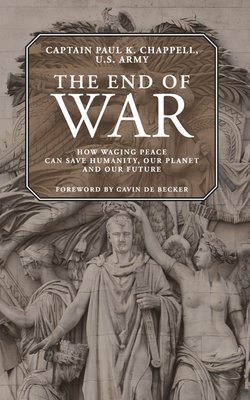The End of War

Реклама. ООО «ЛитРес», ИНН: 7719571260.
Оглавление
Paul K. Chappell. The End of War
CONTENTS
ACKNOWLEDGMENTS
FOREWORD
A Manifesto for Waging Peace
EVERY ARMY’S GREATEST PROBLEM
THE KEY TO HUMAN SURVIVAL
THE INDESTRUCTIBLE BOND
WHY BEARS ROAR
NOT ALL SOLDIERS ARE HUMAN BEINGS
FURY AND RAGE
THE BURN OF HATRED
UNCONDITIONAL LOVE IS STRONGER THAN HATRED
THE SURVIVAL OF HUMANITY
SOLDIERS OF PEACE
WAGING PEACE
THE FIRST STEP ON THE ROAD TO PEACE
TOWARD A NEW ENLIGHTENMENT
THE NEXT STEP
WAR VETERANS SPEAK
NOTES
BIBLIOGRAPHY
ABOUT THE AUTHOR
AUTHOR’S FAMILY
AUTHOR’S NOTE
PUBLISHER’S NOTE
RECOMMENDED RESOURCES
Отрывок из книги
Dedication
A Manifesto for Waging Peace
.....
In On Killing Grossman said that human beings have an innate resistance to killing other human beings. A country is only capable of waging war, he explained, if propaganda is used to dehumanize the enemy. Sometimes this dehumanization process consists of calling the enemy derogatory names such as “Krauts,” “Japs,” or “Gooks.” In other instances it consists of stereotyping the enemy as the epitome of everything evil in the world while believing that one’s own country is the source of everything good, moral, or holy.
The most effective way to kill human beings and not experience guilt or remorse is to imagine they are not human beings. This involves viewing people as subhuman—so we can rationalize the act of killing—or seeing people as evil monsters so we can perceive the act of killing as a necessary purging of evil from the world. Grossman also explains that the most traumatic experiences in war occur when someone kills a human being, not when someone is in physical danger. According to Grossman’s extensive research, the survivors of the London bombings during World War II did not suffer as much psychological trauma as the soldiers in Vietnam who killed men, women, and children at close range, where they could see the faces of their victims.
.....